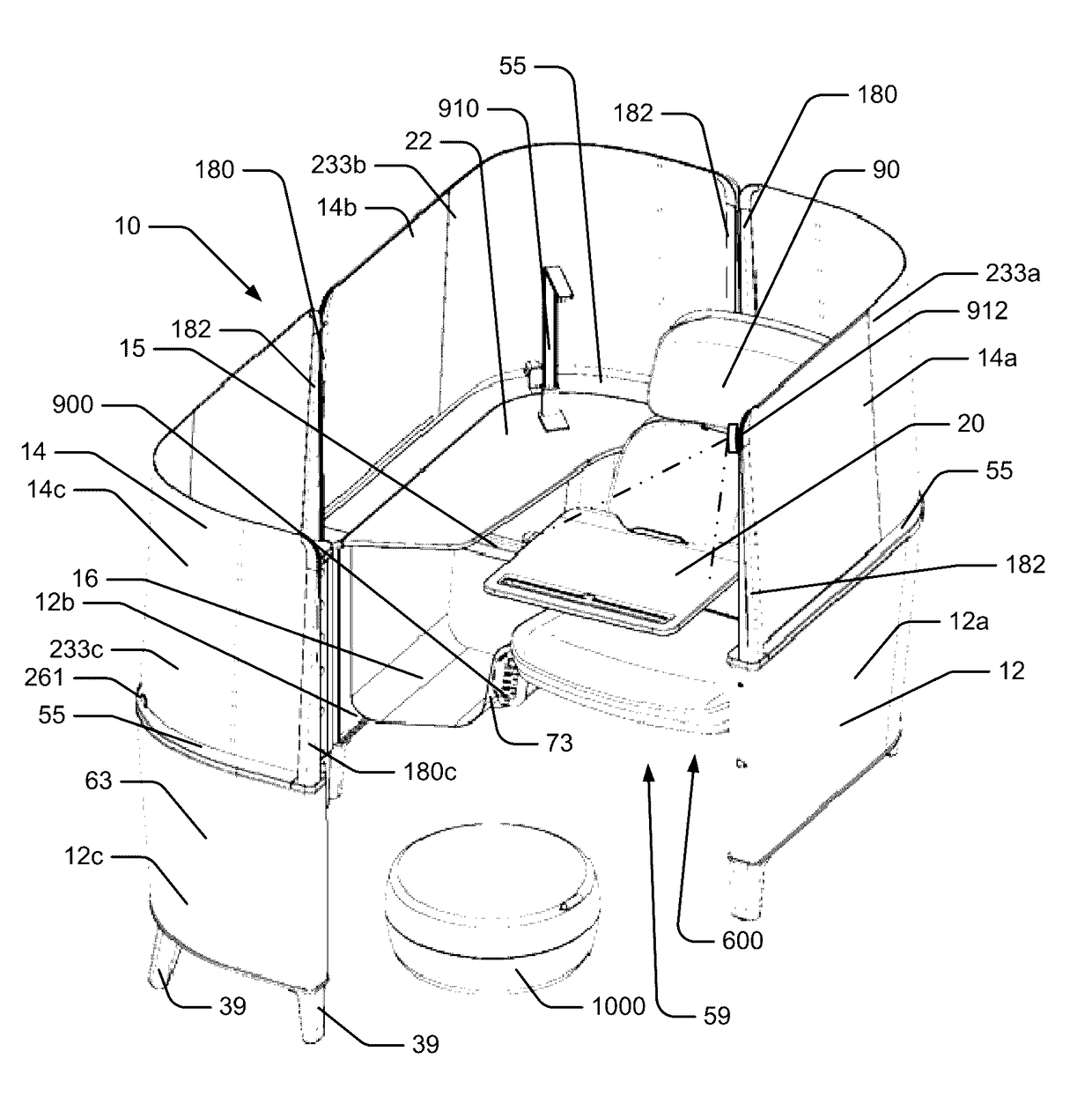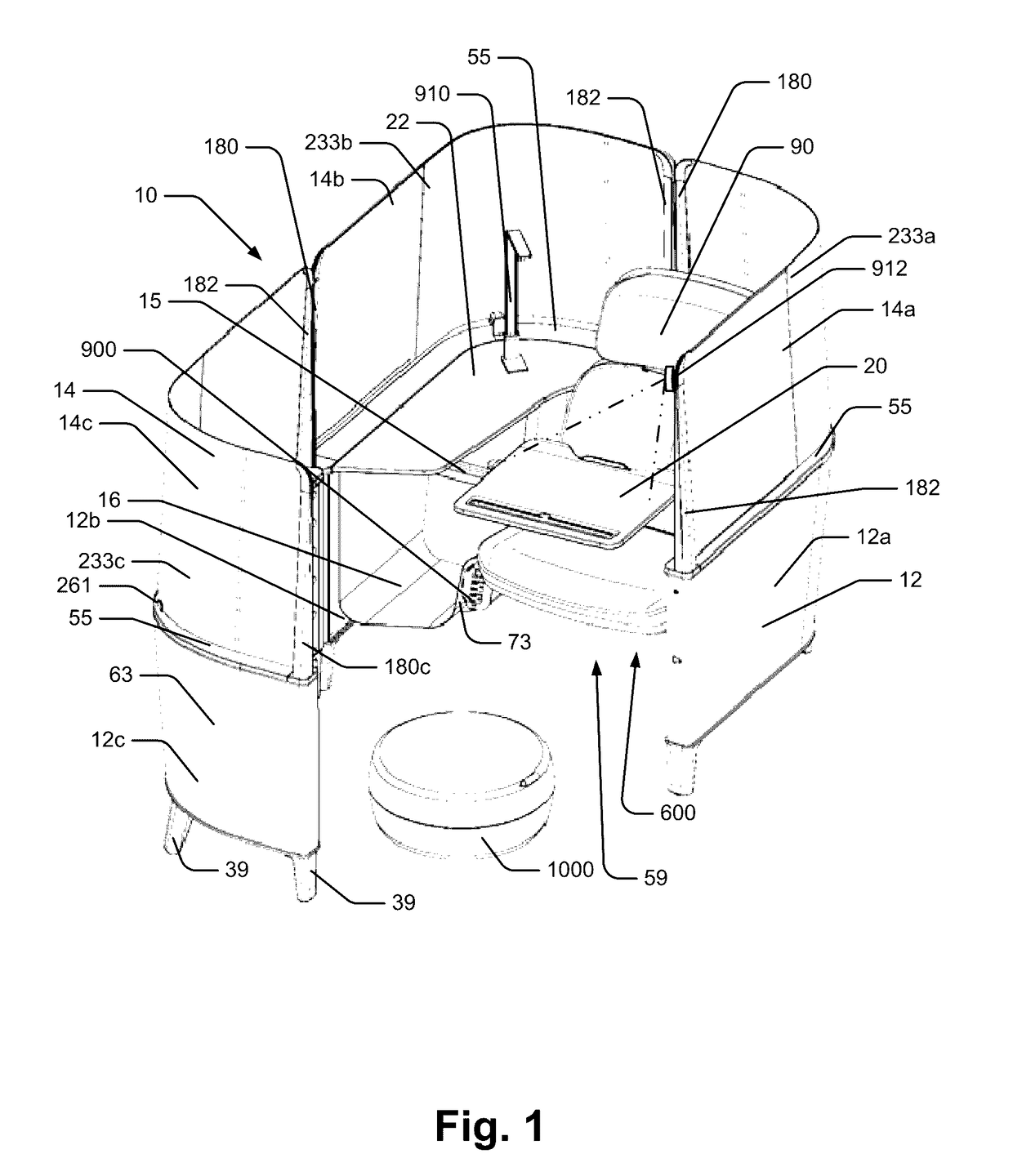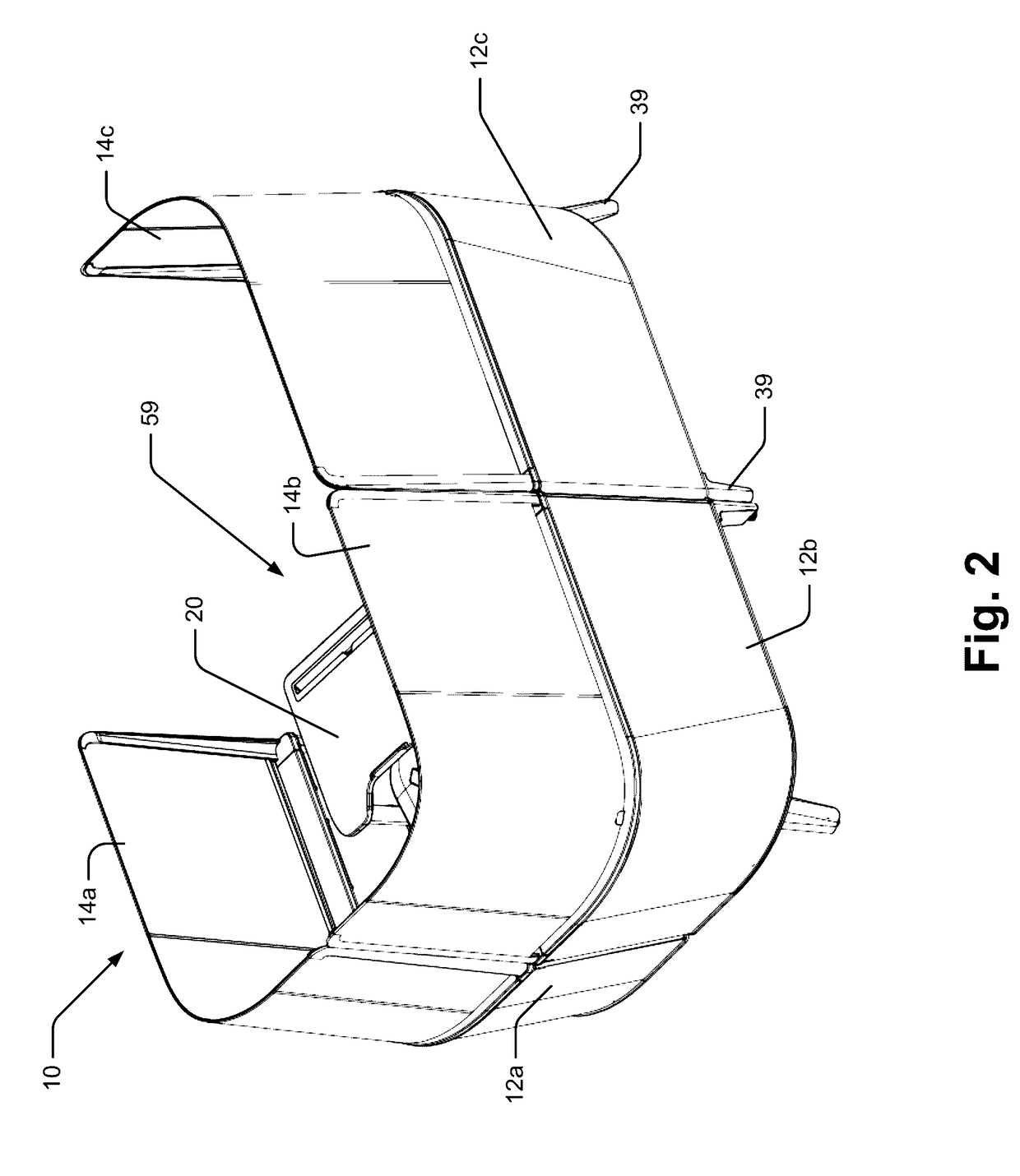Personal workspace assembly
a technology for personal workspaces and assembly lines, applied in the direction of furniture parts, walls, tables, etc., can solve the problems of affecting the overall appearance and feel of the space, affecting the ability of small hotelling offices to facilitate impromptu meetings, and affecting the ability of traveling employees to see, so as to reduce the possibility of damage to arrangement affordances.
- Summary
- Abstract
- Description
- Claims
- Application Information
AI Technical Summary
Benefits of technology
Problems solved by technology
Method used
Image
Examples
Embodiment Construction
[0154]Referring now to the drawings wherein like reference numerals correspond to similar elements throughout the several view and more specifically, referring to FIGS. 1 through 5, the present disclosure will be described in the context of an exemplary personal workspace assembly or arrangement 10 that includes a lounge subassembly 90 mounted within an assembly space 59 defined by a space defining structure including a lower wall subassembly 12 and an upper screen subassembly 14. In addition to the lounge subassembly, other structure and features are provided within space 59 including, in the illustrated embodiment, a lower shelf subassembly 16, a side upper shelf member or work surface member 22 and related assembly and a tablet assembly 20 that is supported for movement within the space 59 by an articulating arm assembly 15.
[0155]Referring still to FIGS. 1 through 5, the lower wall subassembly 12 includes three separate wall section subassemblies labeled 12a, 12b and 12c. While e...
PUM
 Login to View More
Login to View More Abstract
Description
Claims
Application Information
 Login to View More
Login to View More - R&D
- Intellectual Property
- Life Sciences
- Materials
- Tech Scout
- Unparalleled Data Quality
- Higher Quality Content
- 60% Fewer Hallucinations
Browse by: Latest US Patents, China's latest patents, Technical Efficacy Thesaurus, Application Domain, Technology Topic, Popular Technical Reports.
© 2025 PatSnap. All rights reserved.Legal|Privacy policy|Modern Slavery Act Transparency Statement|Sitemap|About US| Contact US: help@patsnap.com



